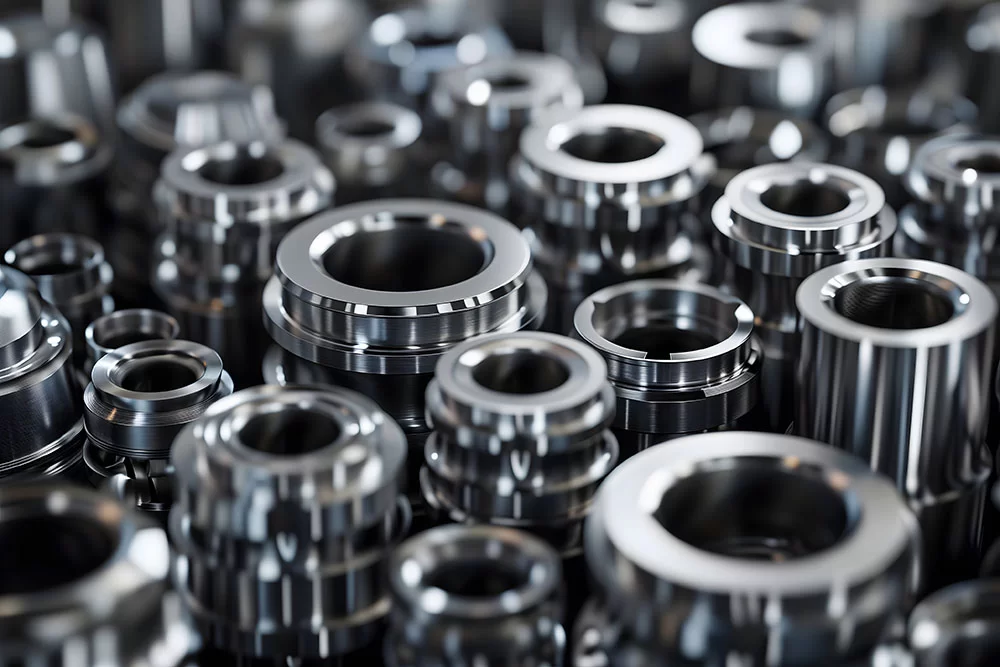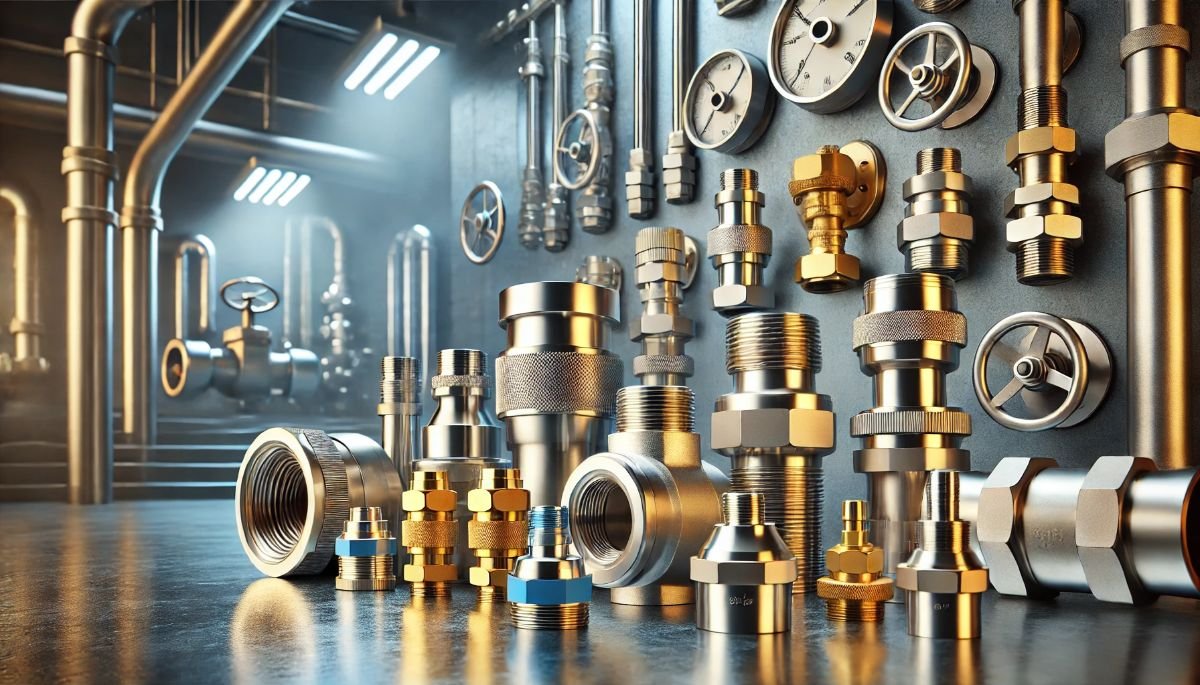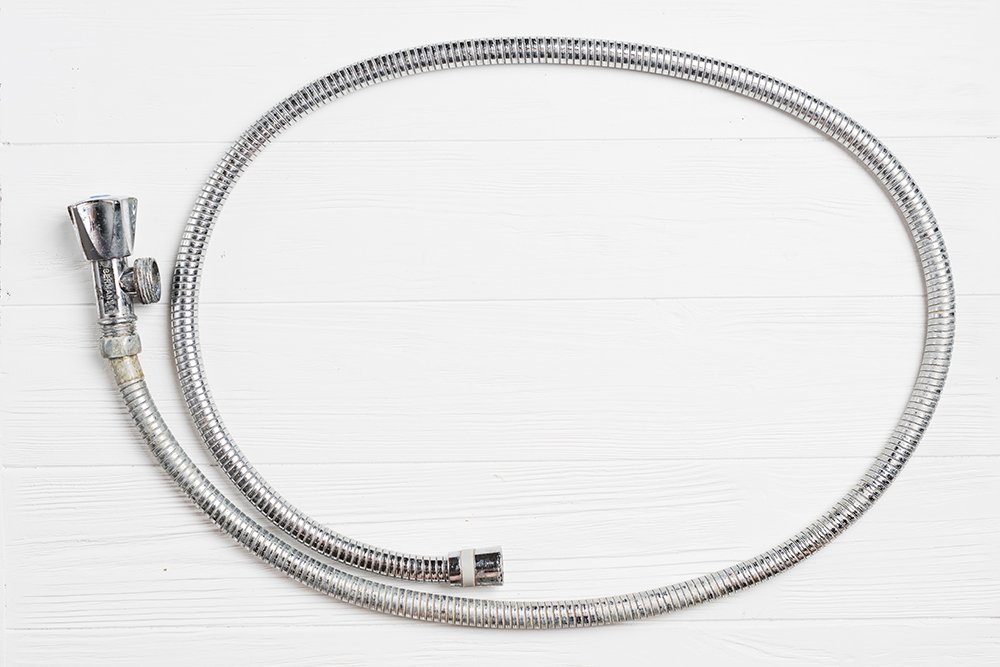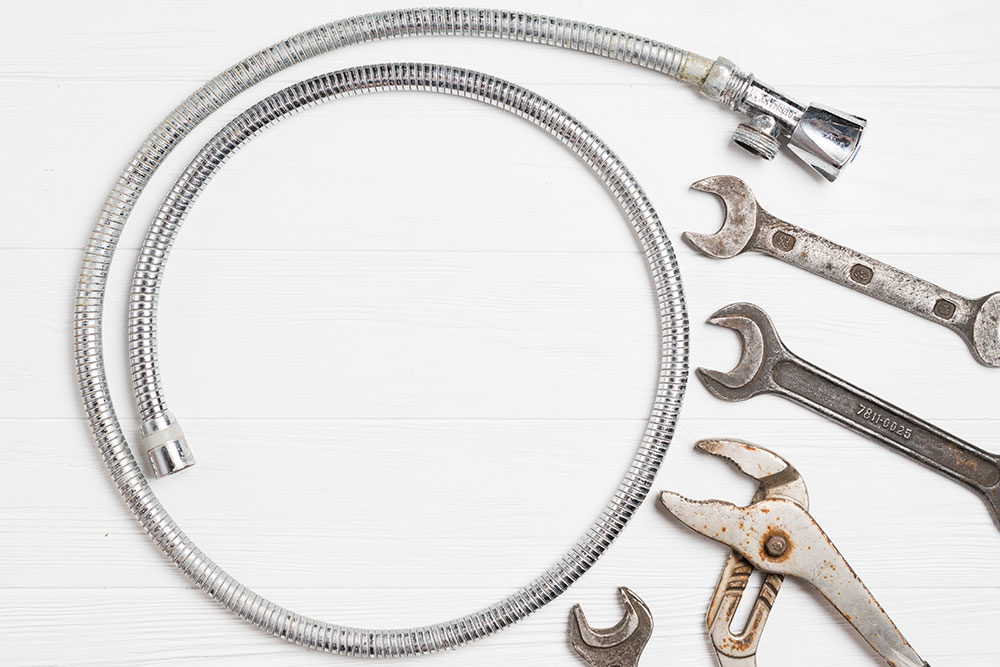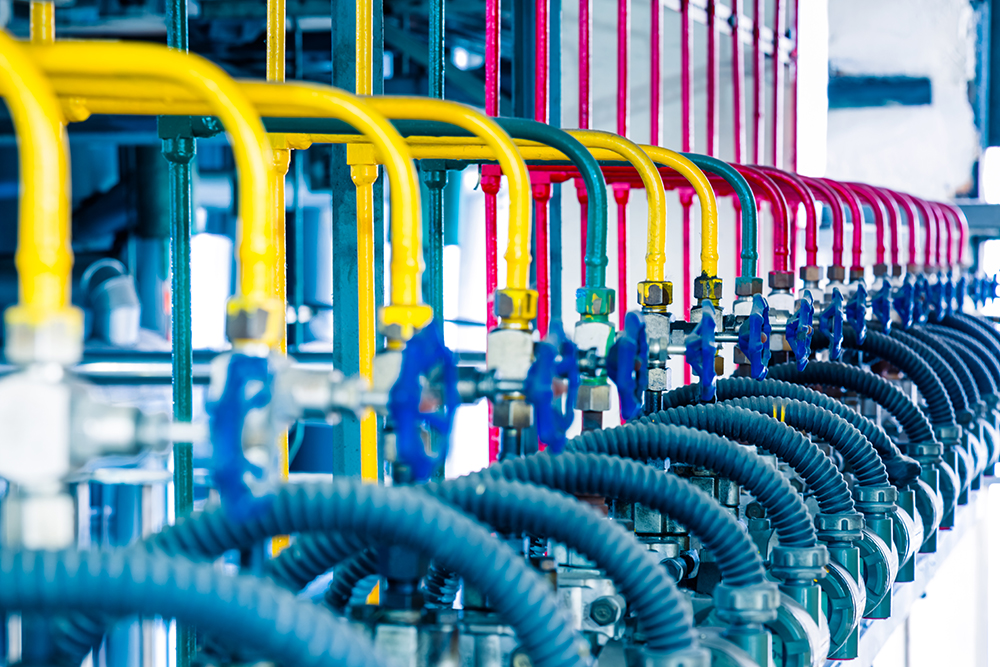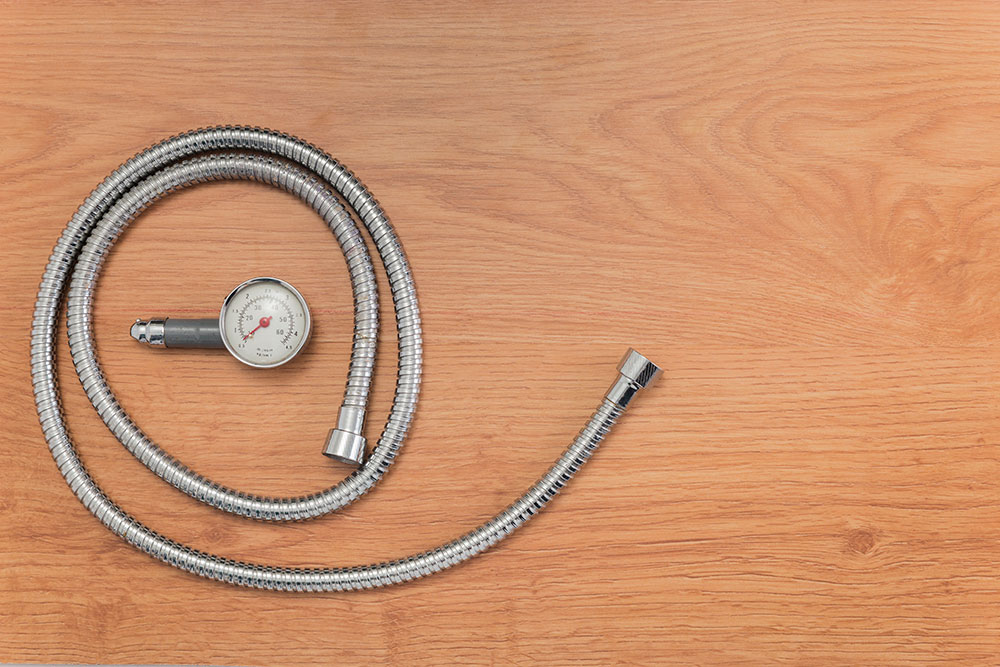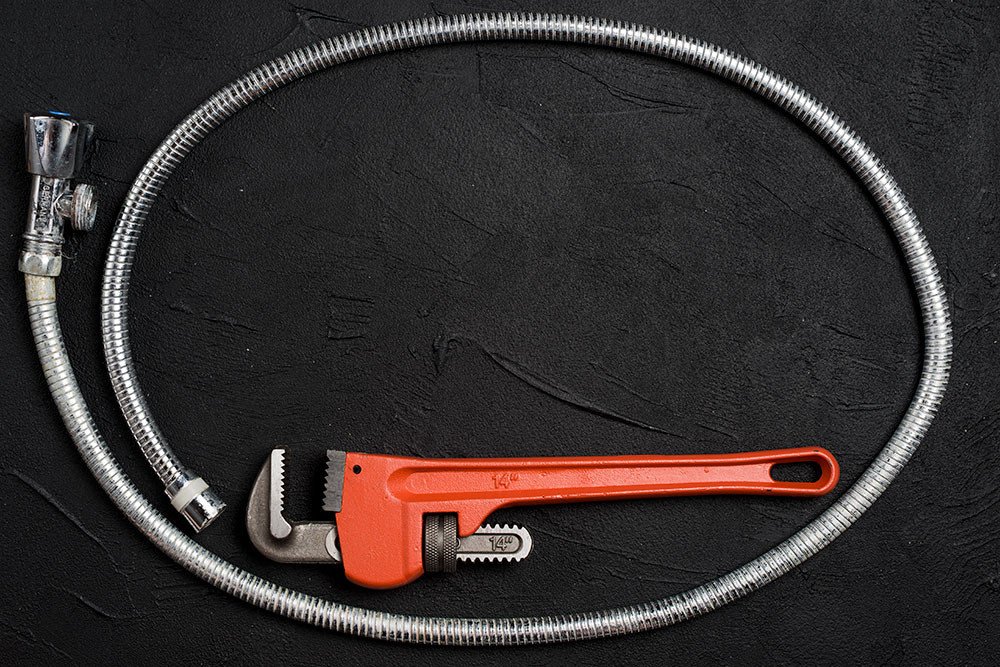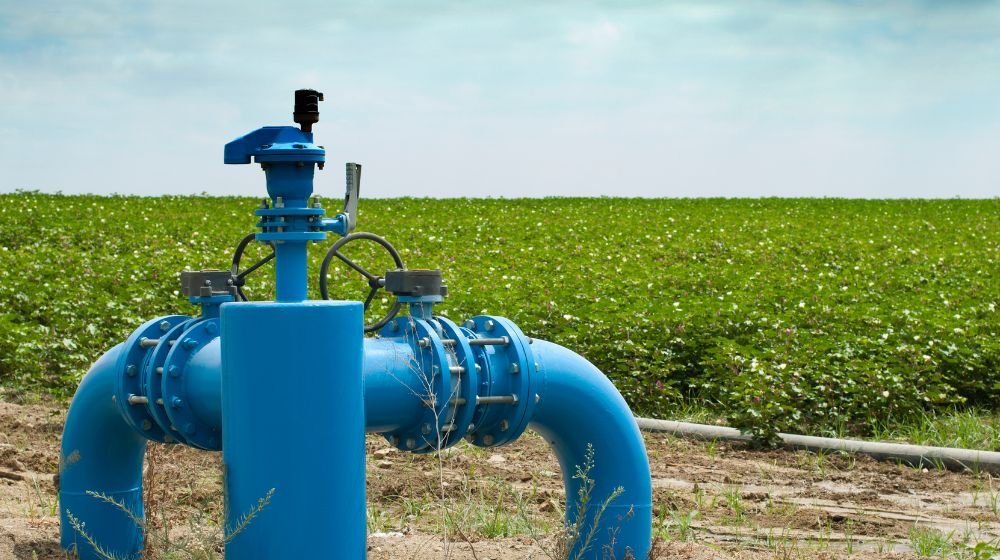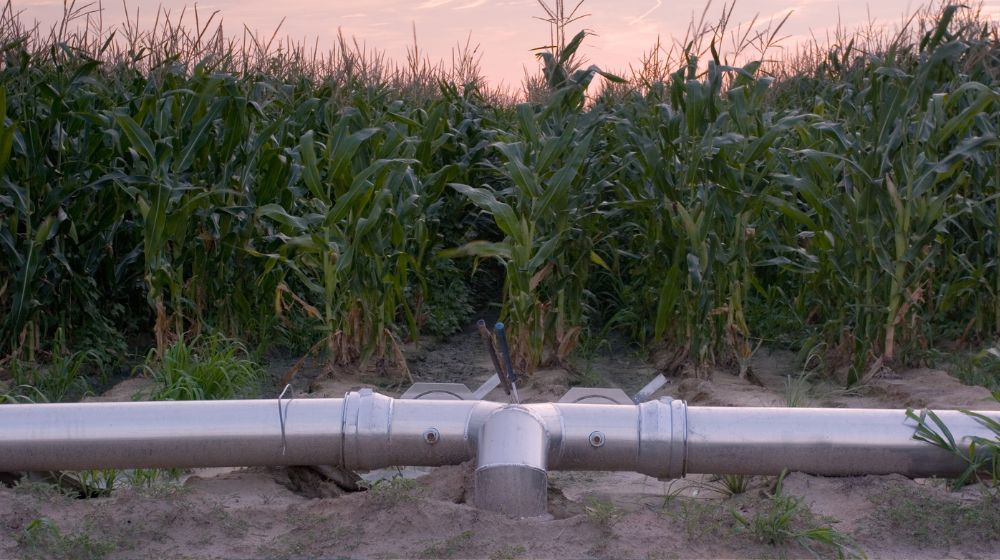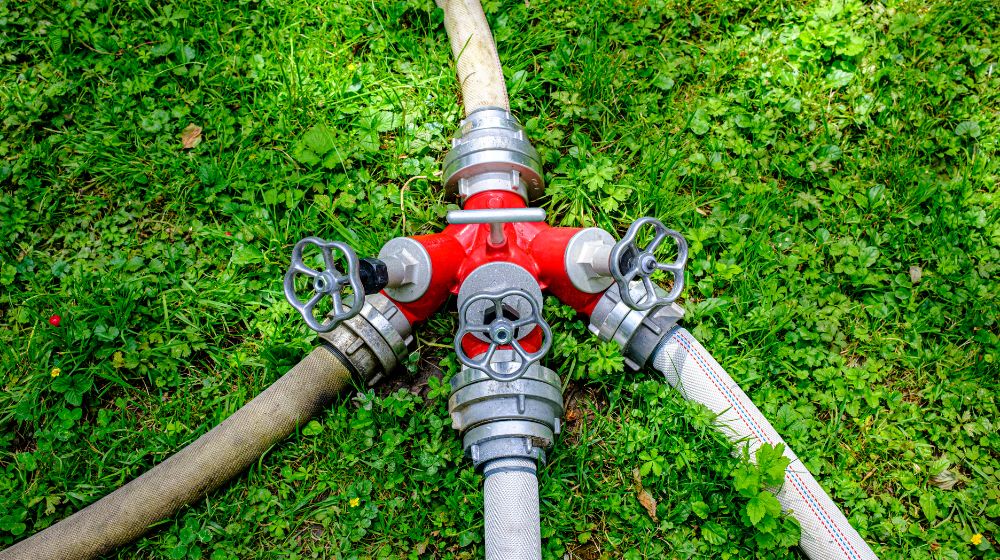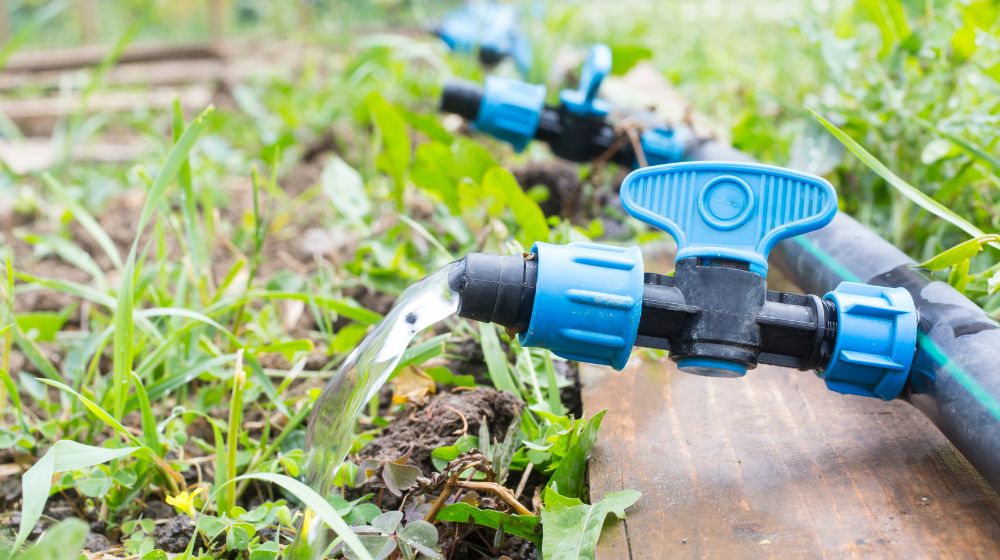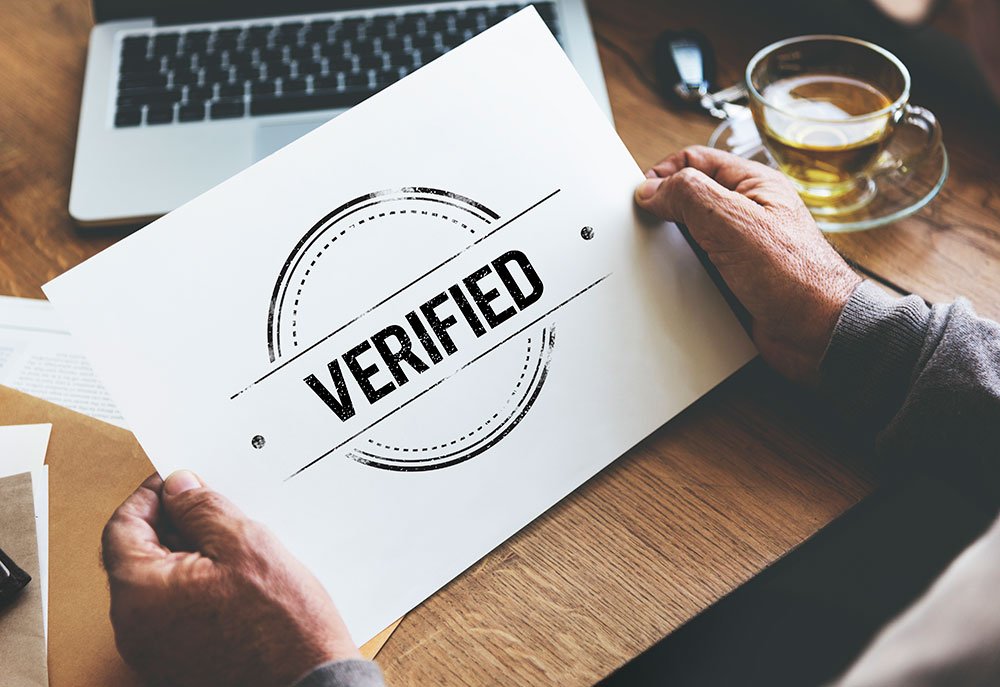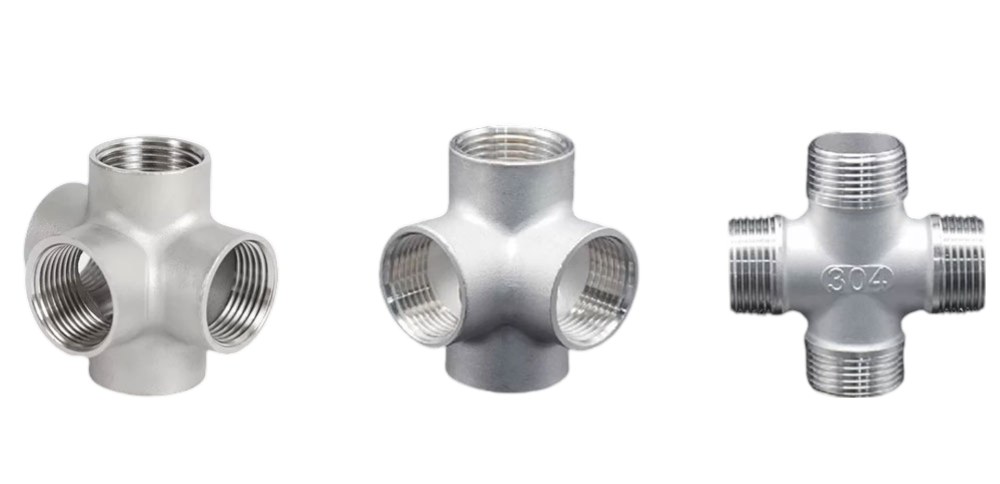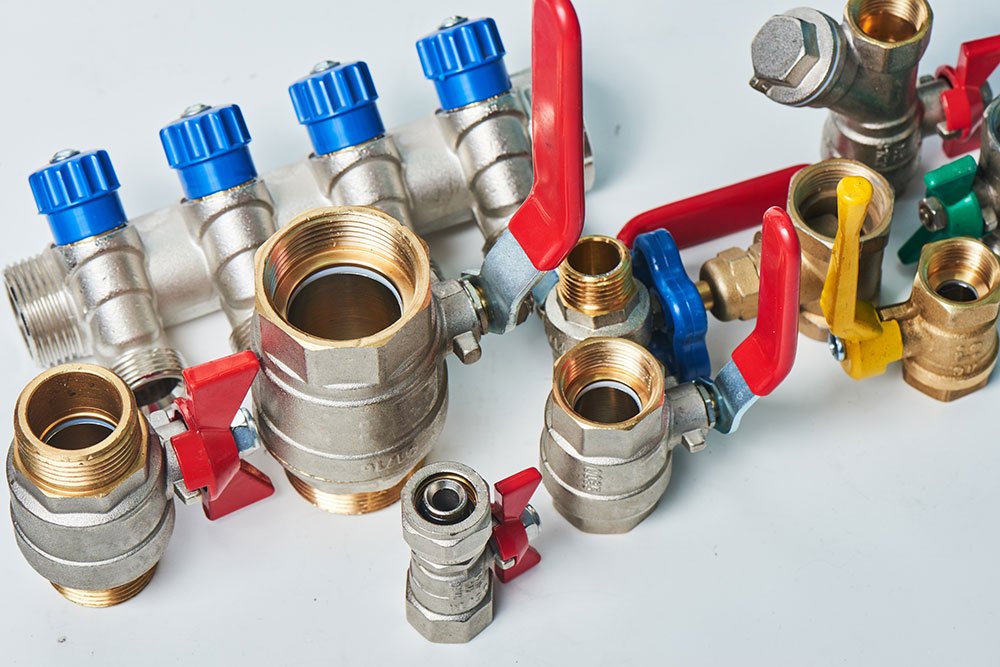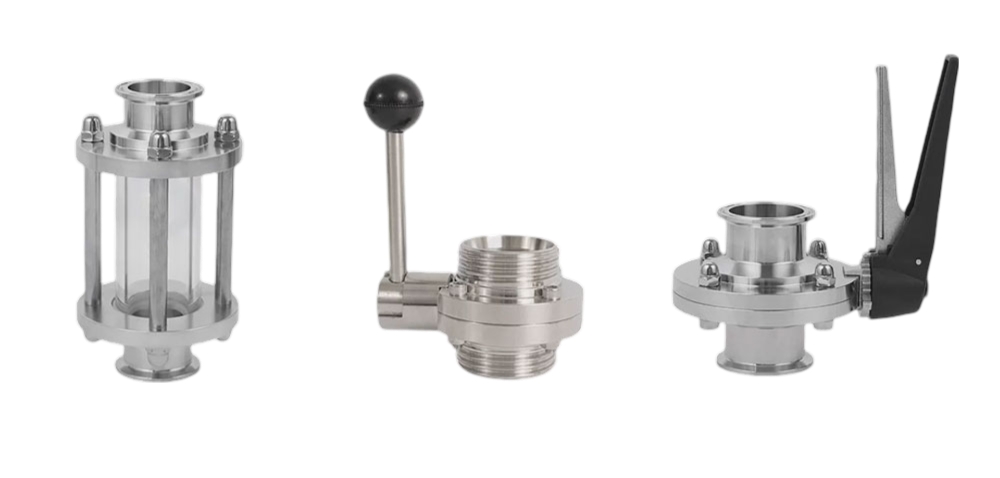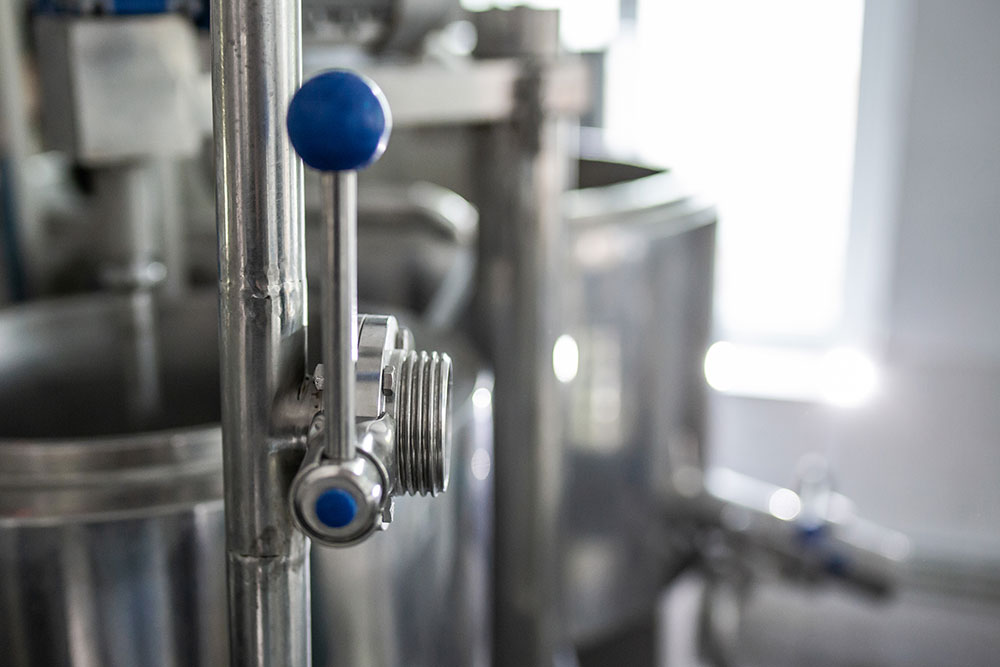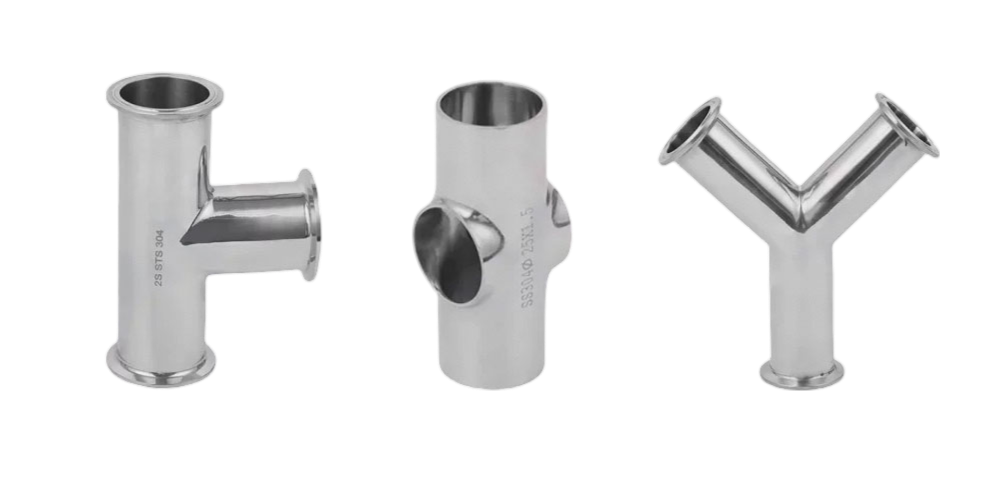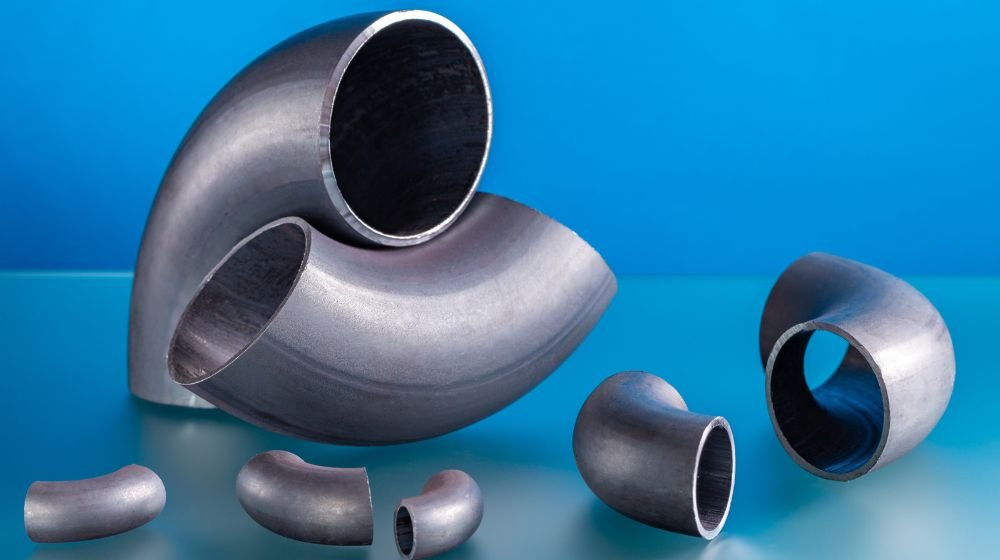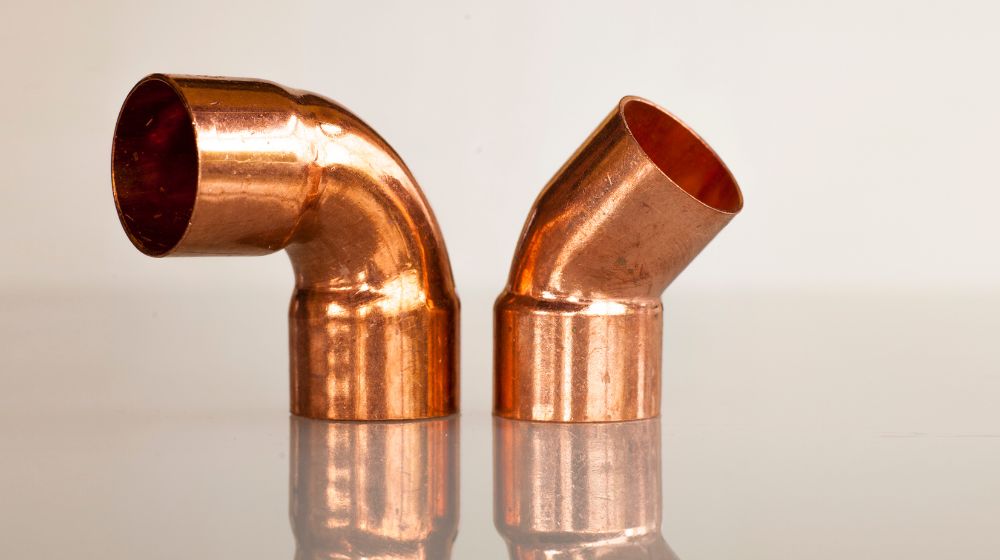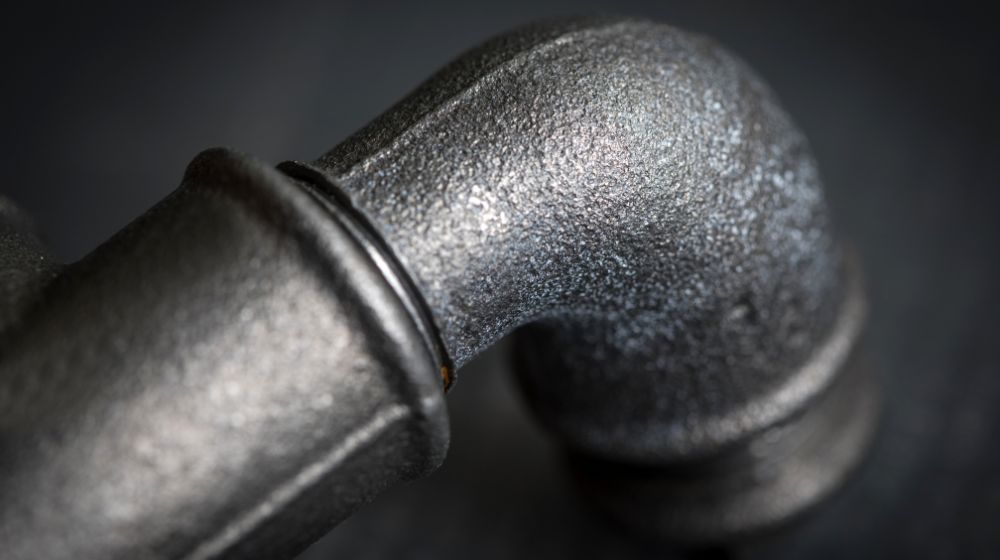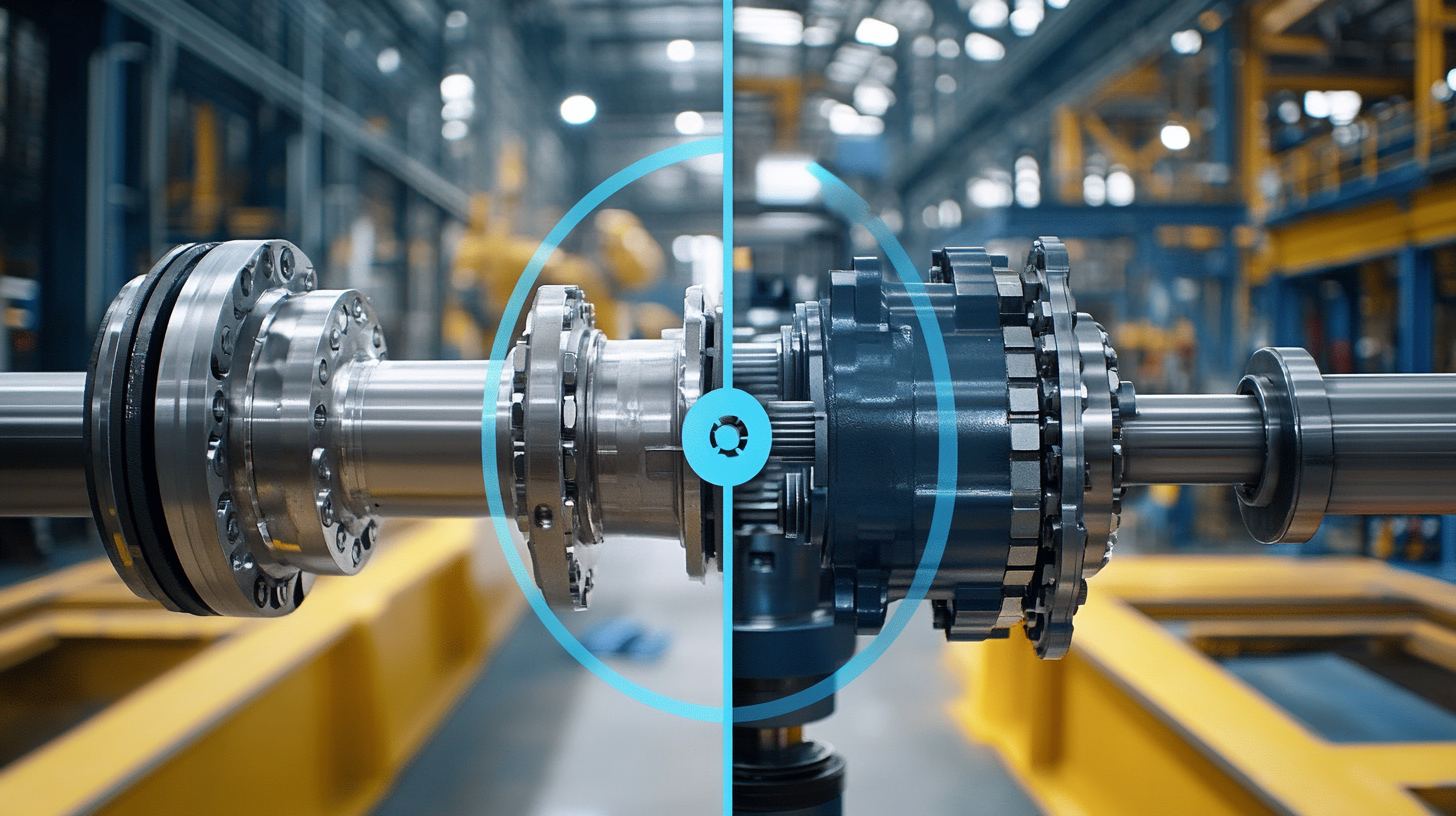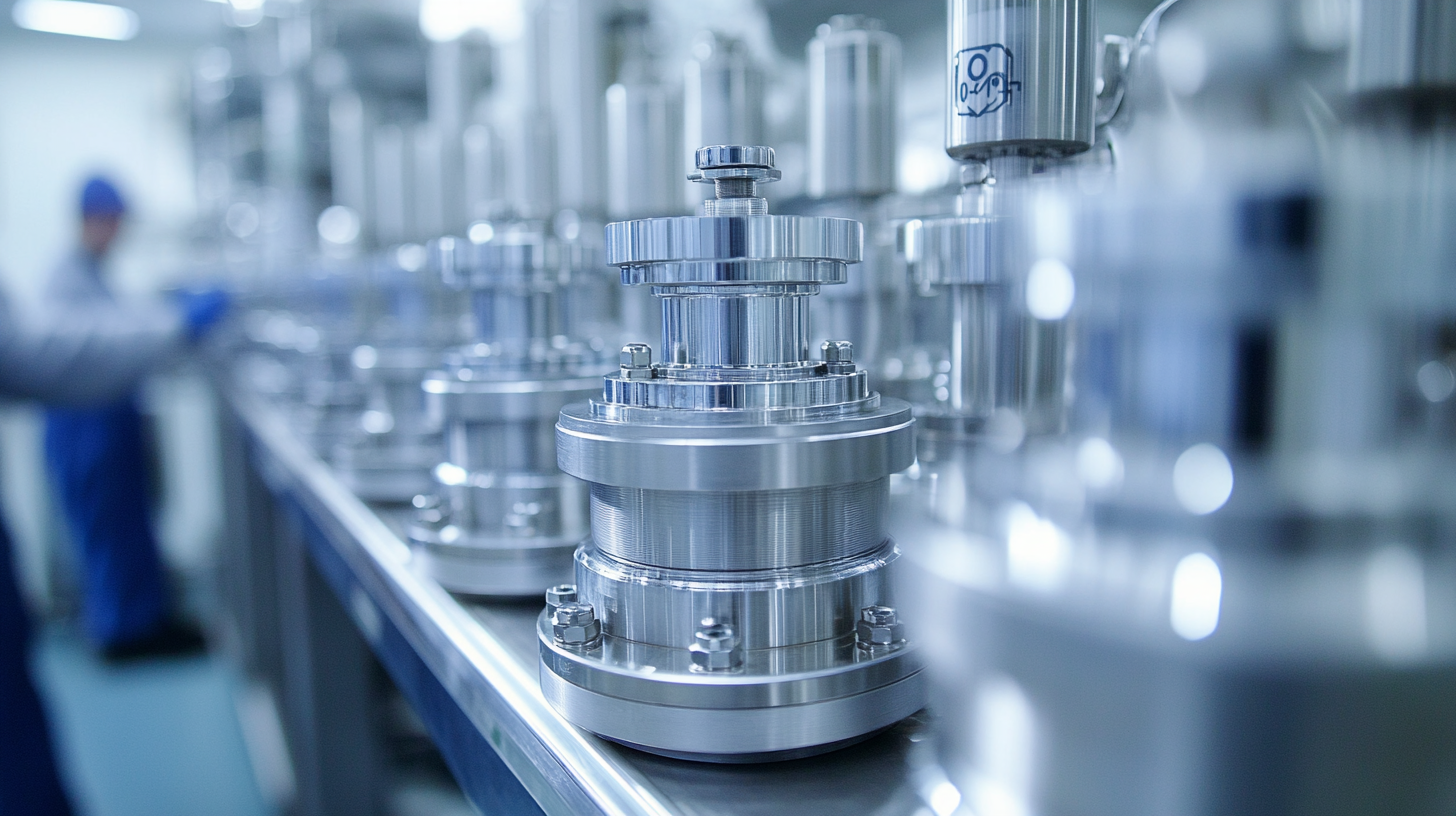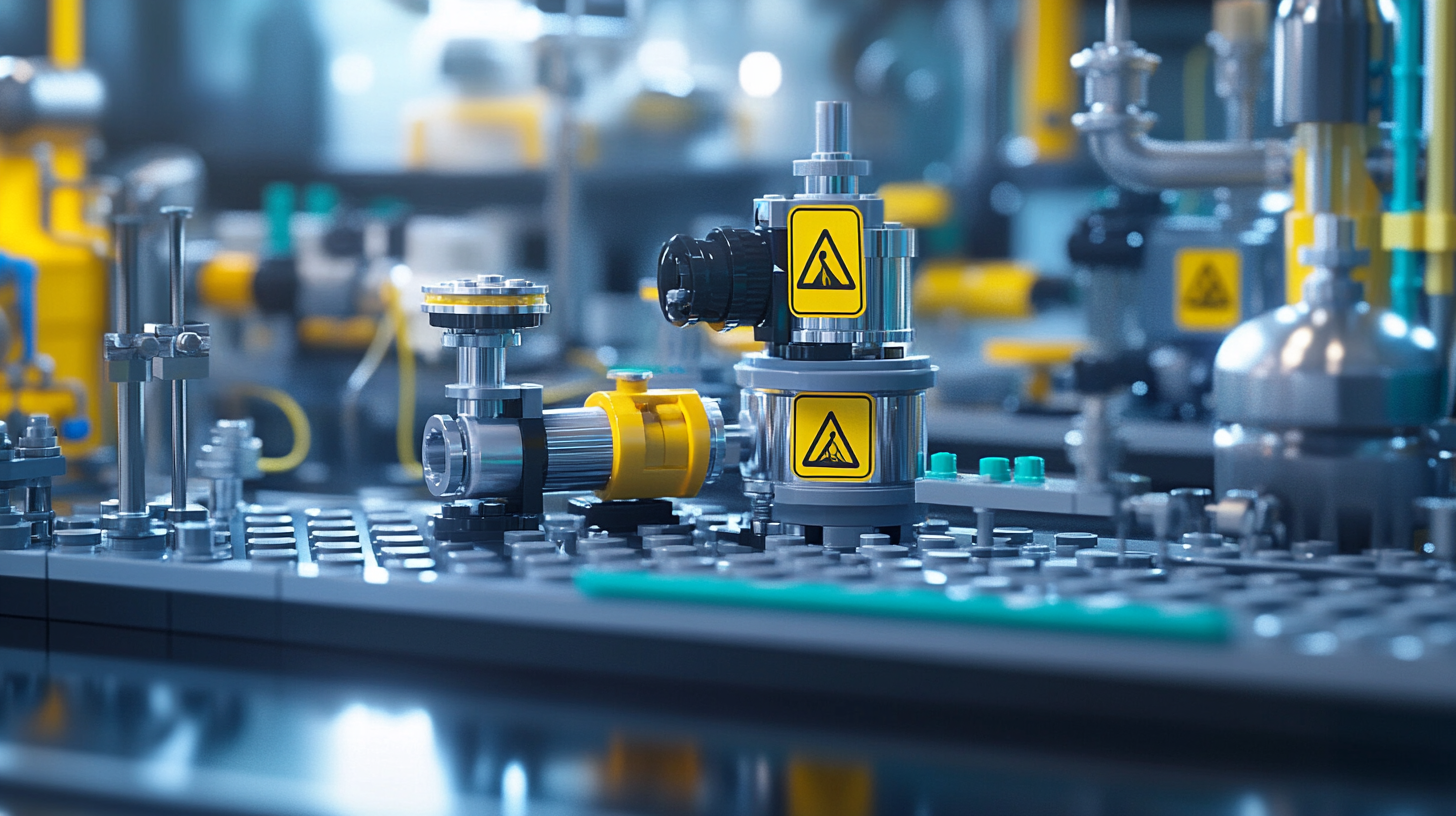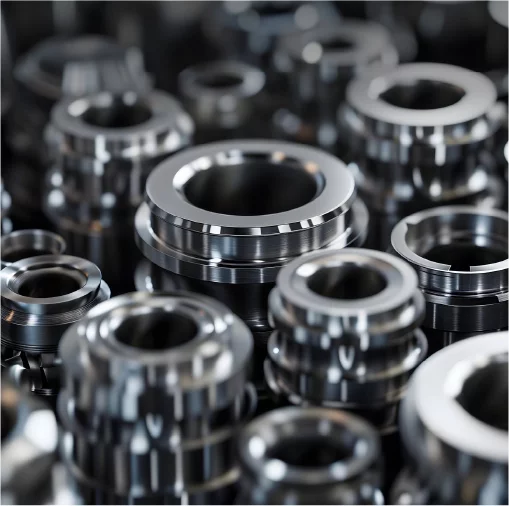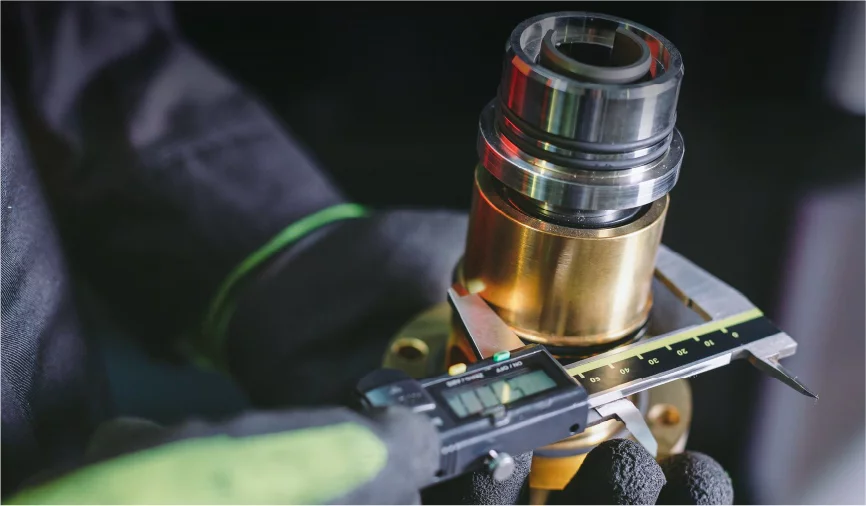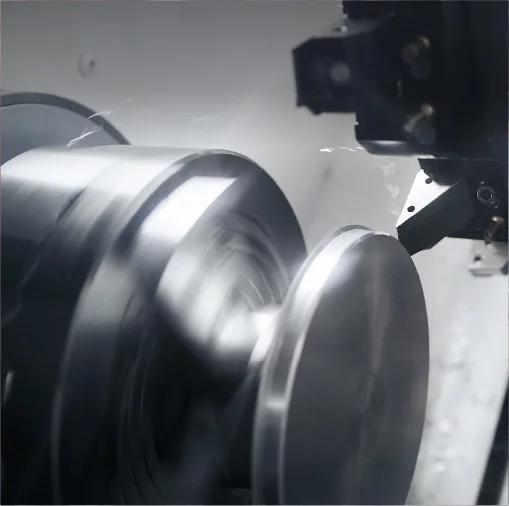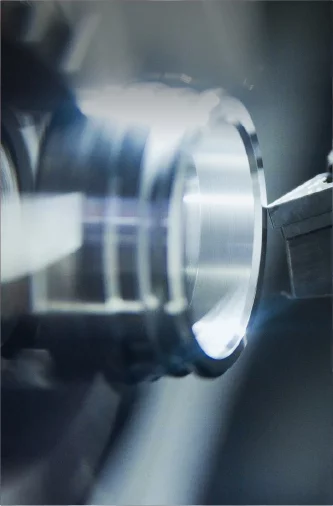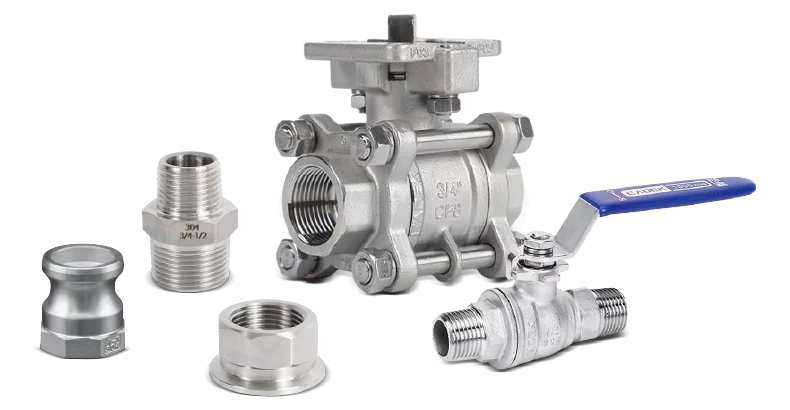I industrisektoren, Camlock-fittings er meget populære på grund af deres bekvemme tilslutningsmetoder og brede anvendelsesområde. Det er dog afgørende at vælge det rigtige materiale for at sikre deres ydeevne og levetid. I dag vil vi dykke ned i anvendelserne af aluminium, rustfrit stål og messing i Camlock-fittings og hjælpe dig med at træffe en informeret beslutning.
Introduktion
Hvad er Camlock-fittings?
Camlock-fittings, også kendt som hurtigkoblinger, er forbindelsesenheder, der bruges til transmission af væsker og gasser. Disse fittings består af en han- og hunkomponent, der opnår en hurtig og sikker forbindelse gennem en roterende låsemekanisme. Camlock-fittings anvendes i vid udstrækning i forskellige industrier såsom kemikalier, fødevarer og drikkevarer samt medicinsk udstyr takket være deres effektivitet, brugervenlighed og pålidelighed.
Hvorfor materialevalg er vigtigt for Camlock-fittings
Det er afgørende at vælge det rigtige materiale til Camlock-fittings, da det har en direkte indflydelse på deres ydeevne, holdbarhed og omkostningseffektivitet. Materialet bestemmer, hvor godt fittingsene kan modstå miljøfaktorer som tryk, temperatur og eksponering for ætsende stoffer. Ved at vælge det rigtige materiale kan du forbedre systemets effektivitet, reducere vedligeholdelsesomkostninger og forlænge levetiden for dit udstyr.
Almindelige materialer til Camlock-fittings
Aluminium
Ydeevneegenskaber
- Letvægts: Camlock-fittings i aluminium er lette, hvilket gør dem nemme at installere og transportere.
- God varmeledningsevne: Velegnet til applikationer, der kræver hurtig varmeafledning.
- Korrosionsbestandighed: Aluminium tilbyder god korrosionsbestandighed i visse miljøer.
Egnede anvendelser
- Anvendelser med let belastning: Ideel til lavtryks- og lavbelastningsvæsketransmissionssystemer.
- Fødevare- og drikkevareindustrien: Aluminium er let at rengøre og opfylder hygiejnestandarder.
Fordele og ulemper
- Fordele: Let og omkostningseffektiv, velegnet til projekter med begrænset budget.
- Ulemper: Lavere styrke og generel slidstyrke, ikke egnet til miljøer med høj styrke.
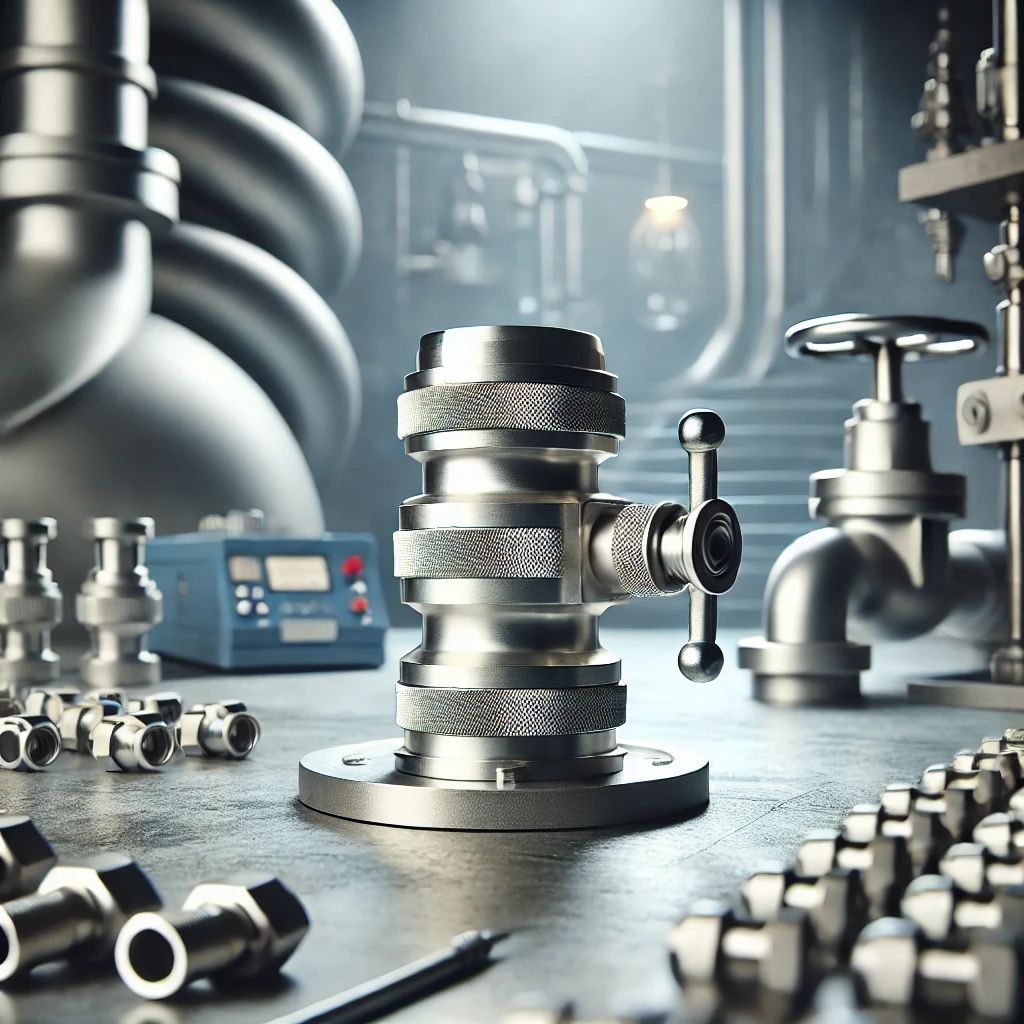
Rustfrit stål
Ydeevneegenskaber
- Høj styrke: Rustfrit stål tilbyder fremragende mekanisk styrke og er velegnet til barske forhold.
- Overlegen korrosionsbestandighed: Fungerer godt i sure og alkaliske miljøer og forlænger dermed levetiden.
- Højtemperaturmodstand: Kan modstå drift ved høje temperaturer, egnet til systemer med høj varmetransmission
Egnede anvendelser
- Kemisk industri: Forskellige kemiske medier kræver høj korrosionsbestandighed.
- Olie- og gasindustrien: Høj pålidelighed er nødvendig i miljøer med højt tryk og høje temperaturer.
Fordele og ulemper
- Fordele: Holdbar med lave vedligeholdelsesomkostninger, ideel til langvarig brug.
- Ulemper: Højere omkostninger og større vægt, hvilket kan øge installationsbyrden.

Messing
Ydeevneegenskaber
- God elektrisk ledningsevne: Velegnet til applikationer, der kræver elektriske forbindelser.
- Antibakterielle egenskaber: Naturligt antibakteriel, ideel til miljøer med høje hygiejnekrav.
- Høj bearbejdelighed: Let at fremstille i komplekse former, der imødekommer forskellige behov.
Egnede anvendelser
- Medicinsk udstyr: Antibakterielle egenskaber sikrer hygiejnisk sikkerhed i medicinske miljøer.
- Vandbehandlingssystemer: Korrosionsbestandig og nem at rengøre, velegnet til vandbehandlingsapplikationer.
Fordele og ulemper
- Fordele: Korrosionsbestandig og antibakteriel, ideel til specifikke applikationer med høj efterspørgsel.
- Ulemper: Lavere styrke sammenlignet med rustfrit stål og moderat prissat, men ikke så økonomisk som aluminium.
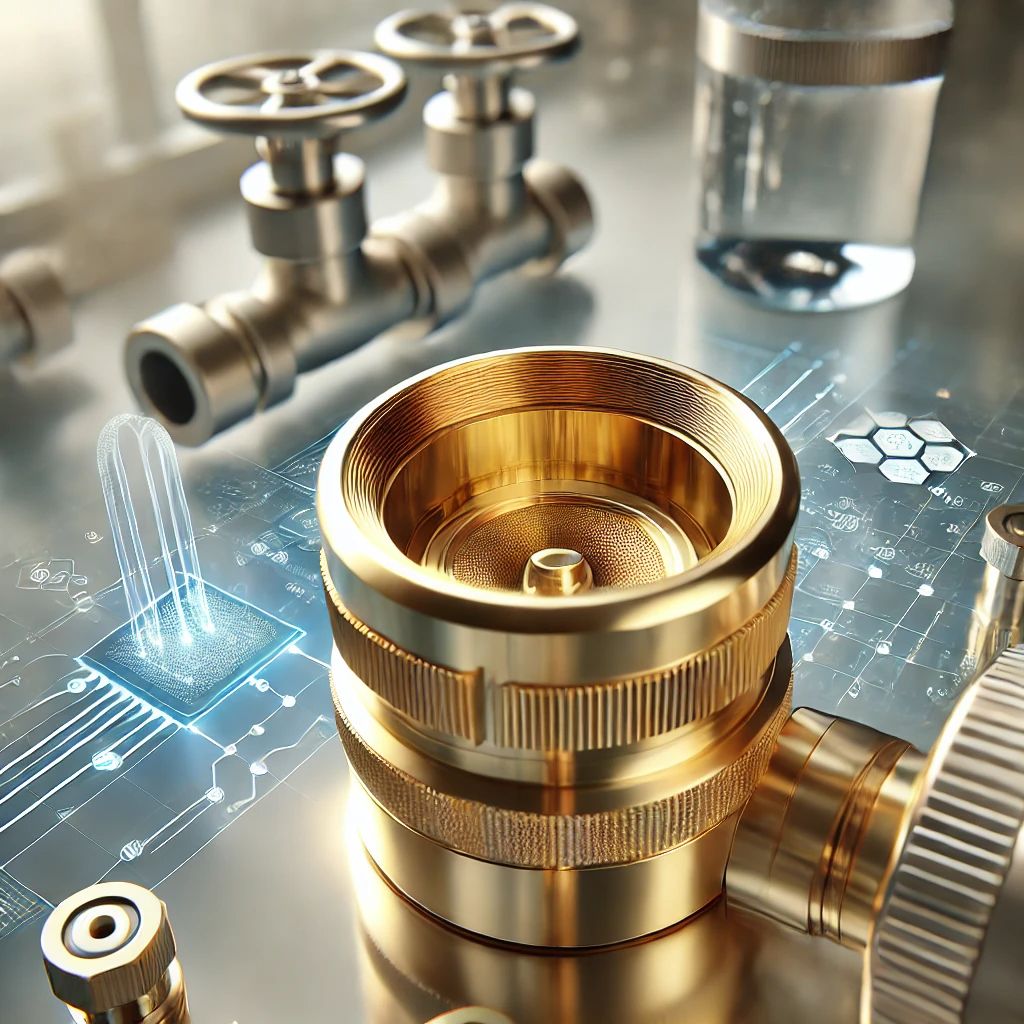
Sammenligning af forskellige materialer
Modstandsdygtighed over for korrosion
- Rustfrit stål > Messing > Aluminium Rustfrit stål klarer sig bedst i forskellige korrosive miljøer, efterfulgt af messing. Aluminium tilbyder også god korrosionsbestandighed i specifikke situationer.
Styrke og holdbarhed
- Rustfrit stål > Messing > Aluminium Rustfrit stål har den højeste mekaniske styrke og holdbarhed, messing er moderat, og aluminium er lavere, egnet til forskellige styrkekrav.
Vægt
Aluminium < Messing < Rustfrit stål Aluminium er det letteste og ideelt til systemer, hvor det er vigtigt at reducere den samlede vægt, mens rustfrit stål er det tungeste og velegnet til applikationer med høj styrke og høj belastning.
Omkostninger
- Aluminium < Messing < Rustfrit stål Aluminium er det mest omkostningseffektive og velegnet til projekter med et begrænset budget. Rustfrit stål er det dyreste, men tilbyder længere levetid og højere ydeevne.
Vedligeholdelse og vedligeholdelse
- Rustfrit stål er nemt at vedligeholde.
- Messing kræver regelmæssige inspektioner for at forhindre oxidation.
- Aluminium bliver let ridset, hvilket kan påvirke ydeevnen. Når du vælger et materiale, skal du overveje bekvemmeligheden og hyppigheden af vedligeholdelse.
Materialevalg til specifikke anvendelser
Industriel væsketransmission
- Foretrukket materiale: Rustfrit stål
- Årsag: Høj styrke og korrosionsbestandighed til at modstå forskellige barske forhold, hvilket sikrer stabil og sikker væsketransmission.
Fødevare- og drikkevareindustrien
- Foretrukket materiale: Aluminium eller rustfrit stål
- Årsag: Aluminium er let og nemt at rengøre, mens rustfrit stål tilbyder korrosionsbestandighed og opfylder hygiejnestandarder, hvilket imødekommer de specifikke behov i fødevare- og drikkevaresektoren.
Landbrug og kemisk forarbejdning
- Foretrukket materiale: Rustfrit stål
- Årsag: Korrosionsbestandig og kemikalieresistent, i stand til at håndtere forskellige udfordringer inden for landbrugs- og kemisk forarbejdning, hvilket forlænger udstyrets levetid.
Olie og gas
- Foretrukket materiale: Rustfrit stål
- Årsag: Høj styrke og modstandsdygtighed over for høje temperaturer og tryk, hvilket sikrer pålidelighed og sikkerhed i ekstreme miljøer.
Medicinsk udstyr
- Foretrukket materiale: Messing
- Årsag: Antibakterielle egenskaber og høj bearbejdelighed opfylder de strenge hygiejnestandarder i medicinske miljøer og sikrer udstyrets sikkerhed og pålidelighed.
For mere detaljeret indsigt i brugen af specialiserede slangekoblinger på tværs af forskellige brancher, se vores artikel om Anvendelser af Camlock-koblinger på tværs af forskellige brancher.
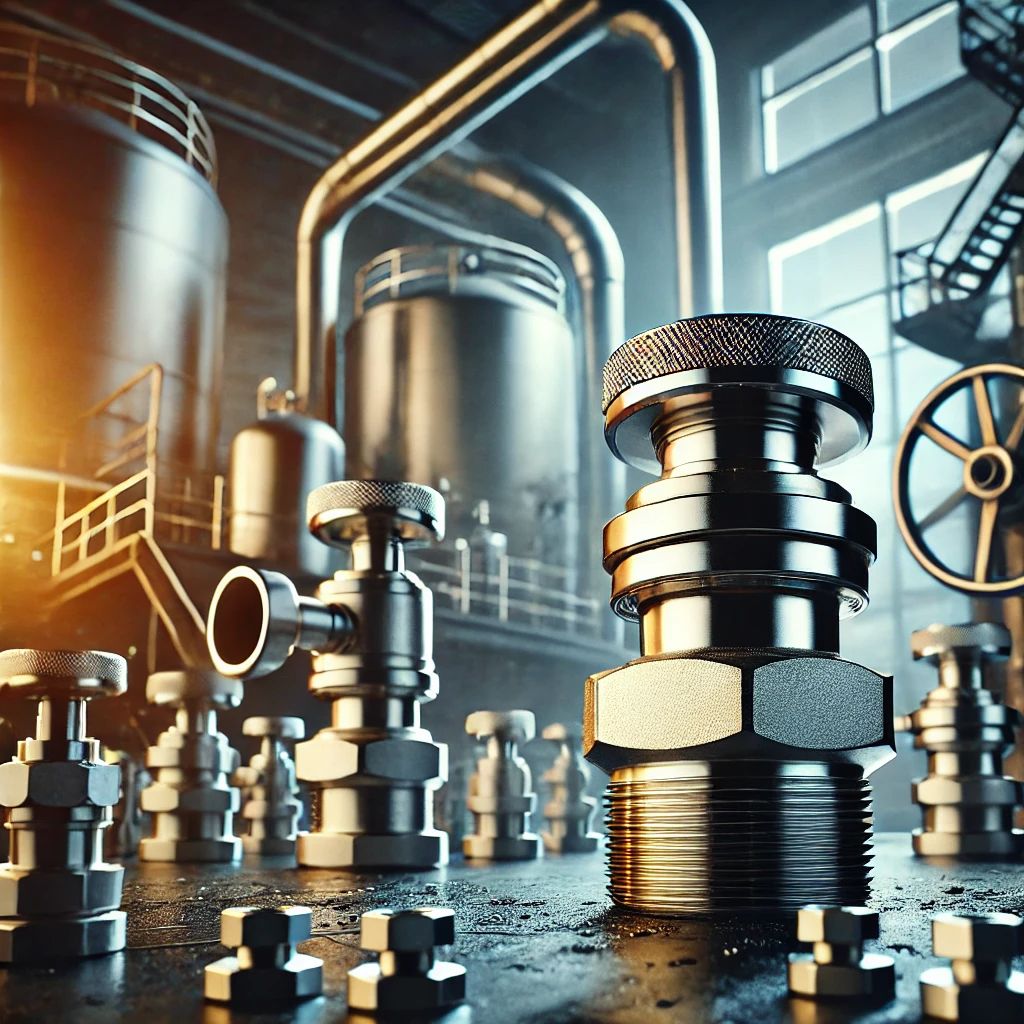
Konklusion
Omfattende overvejelser
Når man vælger materiale til Camlock-fittings, er det vigtigt at overveje anvendelsesmiljøet, budgetbegrænsninger og vedligeholdelseskrav. Forskellige materialer fungerer varierende under forskellige forhold, og et passende valg sikrer effektiv systemdrift og langvarig brug.
Anbefalet materialevalg
Vælg det materiale, der bedst passer til din specifikke anvendelse, og balancer ydeevne og omkostninger for at sikre langsigtet pålidelighed. For eksempel er rustfrit stål ideelt i meget korrosive miljøer, mens aluminium er velegnet til lette og omkostningseffektive scenarier.
Ved at forstå anvendelserne, fordelene og ulemperne ved aluminium, rustfrit stål og messing i Camlock-fittings grundigt, kan du træffe det bedste valg baseret på dine faktiske behov og dermed forbedre den samlede effektivitet og pålidelighed af dit system. Uanset om det er inden for industriel væsketransmission, fødevare- og drikkevareindustrien eller medicinsk udstyr, er valg af det rigtige materiale et afgørende skridt mod at sikre succes.

